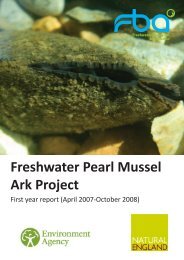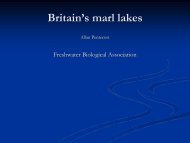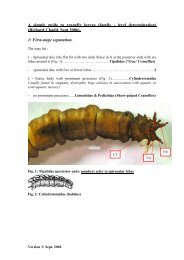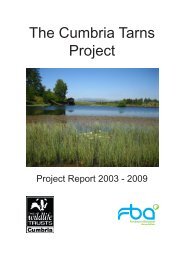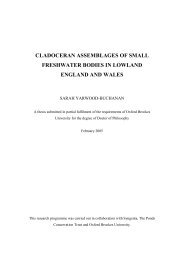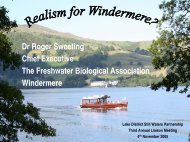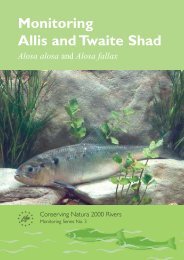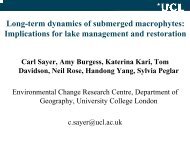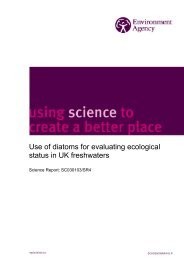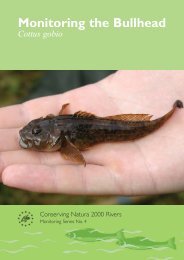EN REPORT (SCIE) F&B (3529b) - FreshwaterLife
EN REPORT (SCIE) F&B (3529b) - FreshwaterLife
EN REPORT (SCIE) F&B (3529b) - FreshwaterLife
You also want an ePaper? Increase the reach of your titles
YUMPU automatically turns print PDFs into web optimized ePapers that Google loves.
documented. It is based on archeological evidence (Preston, Pearman & Hall 2004)<br />
combined with written information from herbals and floras from about 1500. The record for<br />
animals other than vertebrates is much less complete. Temporal trends in the arrival of plant<br />
pests are discussed by Smith and others (2005). The archeological and post-glacial fossil<br />
record is useful for snails and beetles, but most animals have left few remains, so that the<br />
equivalent of archaeophytes cannot be known.<br />
There is a clear difference between the dates of introduction for plants and animals. For<br />
animal groups, the second half of the 20th century was the major period of introduction. The<br />
selection procedure for plants was such that a very recent introduction could not be included.<br />
For those that have become widespread, the main period of introduction was the 18th and<br />
19th centuries. These were the great centuries of botanical exploration, and the main<br />
pathway to England was through gardens.<br />
7.6 Persistence<br />
The majority of species included in the database now have at least one established<br />
populations in England (Table 9). This is not because most introduced species persist.<br />
Indeed they do not (Williamson & Fitter 1996). Inevitably the record of those that appeared<br />
and then failed is poor, unless they were repeatedly introduced or are well known to<br />
gardeners or naturalists. The list of failed and successful introductions of freshwater fishes is<br />
perhaps more complete than that of some other taxonomic groups; only 43% of species listed<br />
in the present audit are known or believed to be established (none of these is diadromous).<br />
For these reasons, the results in Table 9 are not a good basis for comparing the processes of<br />
introduction and establishment in different taxonomic groups.<br />
Table 9. Categories of persistence of introduced species in marine and terrestrial groups<br />
Date range Marine Animals Plants Fungi &<br />
microbes<br />
Total<br />
Persisting, not reproducing 7 22 24 2 55<br />
Established 55 378 608 136 1177<br />
Casual 2 55 42 3 102<br />
Extinct 29 6 2 37<br />
Deliberately extirpated 6 6<br />
Unknown or data lacking 34 2 36<br />
Total 64 524 680 145 1413<br />
An interesting category is the species that have been deliberately extirpated. Only six species<br />
are noted for this in the database. Three are vertebrates, namely the mammals coypu<br />
Myocastor coypus and musk rat Ondatra zibethicus, and the Chinese weatherfish Misgurnus<br />
mizolepis. One hundred and sixty-three outbreaks of Colorado beetle (Leptinotarsa<br />
decemlineata) have been eradicated (Bartlett 1979), and the termite Reticulitermes lucifugus<br />
has been eliminated from Devon. The map butterfly Araschnia levana is also thought to have<br />
been deliberately exterminated, although the colonies might well not have persisted in any<br />
case. Efforts are being made to exterminate ruddy duck Oxyura jamaicensis, but have not yet<br />
achieved their aim. Topmouth gudgeon Pseudorasbora parva is being subjected to selective<br />
extermination.<br />
26




